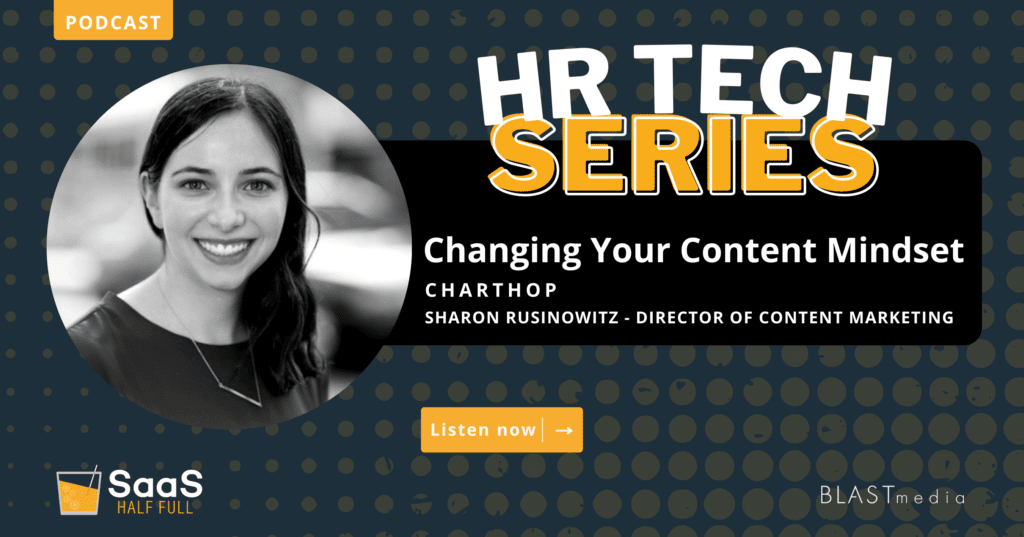
Continuing our HR Tech series, we speak with Sharon Rusinowitz, the Director of Content Marketing at ChartHop. In this episode, Lindsey and Sharon discuss what the content team of the future looks like and how to re-shape how you think about content. Listen as Sharon discusses how to develop a B2B SaaS content strategy extending beyond the written word and how to create a cohesive narrative across mediums.
Content as we know it has changed
When someone mentions “content,” written materials like blog posts, articles or white papers might come to mind. But in the era of TikTok addictions, Instagram reels and Facebook shorts, it should come as little surprise that content has changed drastically. Now, even B2B SaaS marketers contend with a saturated market and shorter attention spans. Although Sharon values traditional blog posts highly, she suggests that marketing departments and content teams consider themselves more holistically.
“Making quality content that stands out…really requires thinking deeply about everything from your audience and your goal to your messaging, your packaging and your delivery,” said Sharon. “And to do that, you really need this broader team of creatives working hand in hand.”
That’s why modern content includes copywriting, graphic design, video production, campaign creation and even community building, according to Sharon. With this vast array of content to consider and create, marketers must emphasize establishing a north star. For Sharon and the ChartHop team, that involved creating a content tree that ensures all new output contributes to ChartHop’s overall mission.
Sometimes, less is more
Drafting a content tree or roadmap is a pivotal first step to generating content. But Sharon also shared that interdepartmental buy-in is crucial on the front-end of a content-based campaign. When everyone’s on the same page, there are fewer opportunities for stumbling blocks down the road. For example, marketing departments and sales teams who outline organization-specific goals or KPIs to work toward are more likely to see results that benefit their respective enterprises.
Just as important, marketers should identify a beneficial reporting cadence early on. And, contrary to popular belief, more frequent reporting may not equal more fruitful reactions.
“I don’t think that reporting on [metrics] on a weekly basis is always the most helpful because content really is a long-term initiative,” said Sharon. “Good content takes time. There is a big, long-tail upside to quality content, and it can take a little while to show itself. And I think sometimes the knee-jerk reaction is, ‘let’s do more.’ But creating more content can often end up shooting yourself in the foot.”
Another essential content consideration that Sharon discussed is quite contentious. Readers, be warned.
To gate or not to gate
…That is the question.
Marketers often disagree about the benefits of gated content (i.e., content readers can access by supplying professional information like email address, industry and organization) vs. non-gated content. Sharon weighed in on argument. Her answer?
“It really depends on where you sit as a content team and what you’re aligned on,” said Sharon. “What is your primary goal? If it’s to generate leads at the top of the funnel, then you probably need to gate your content. But there are always other ways to capture new leads. So if you don’t want your content to sit behind a form… get creative.”
To listen to more of Sharon’s insights, listen to Episode 332 of SaaS Half Full.
